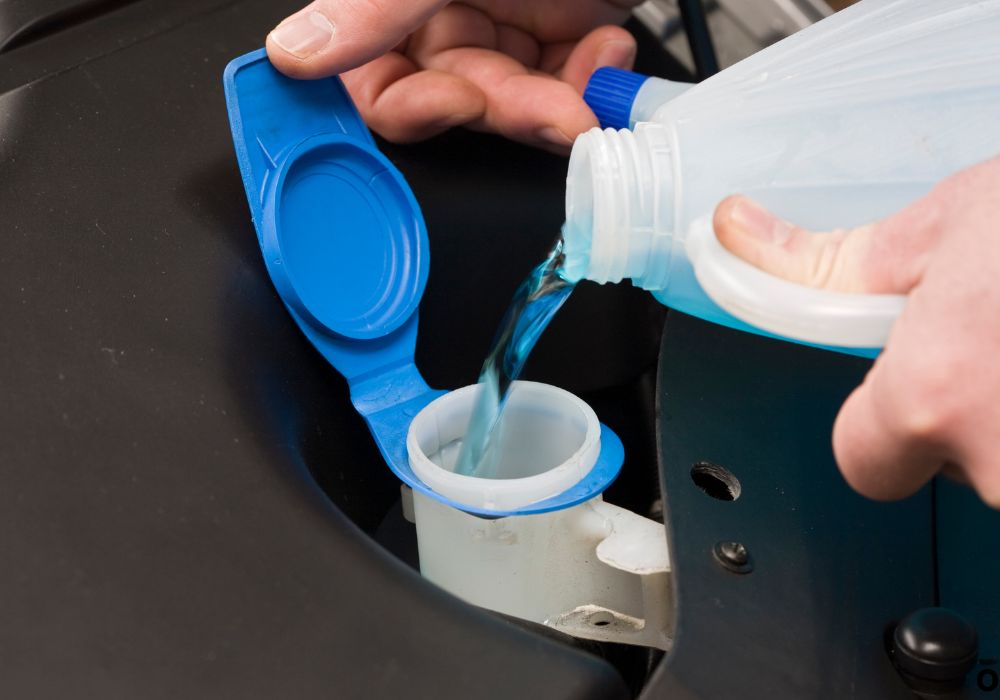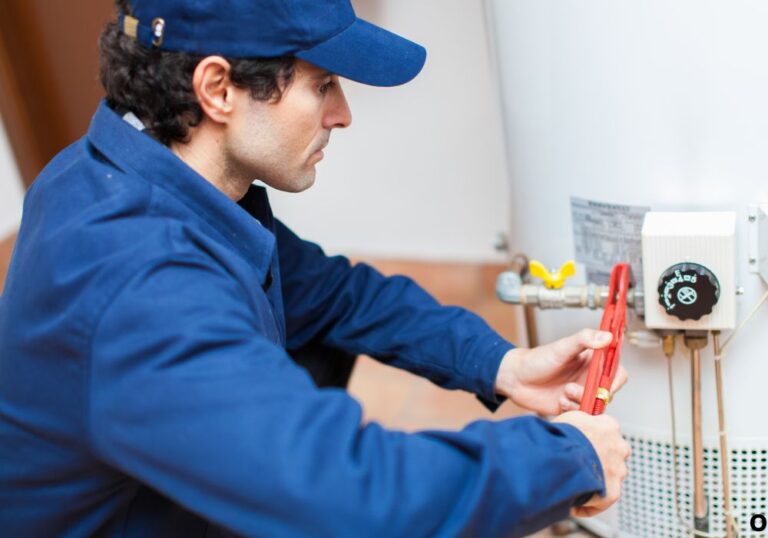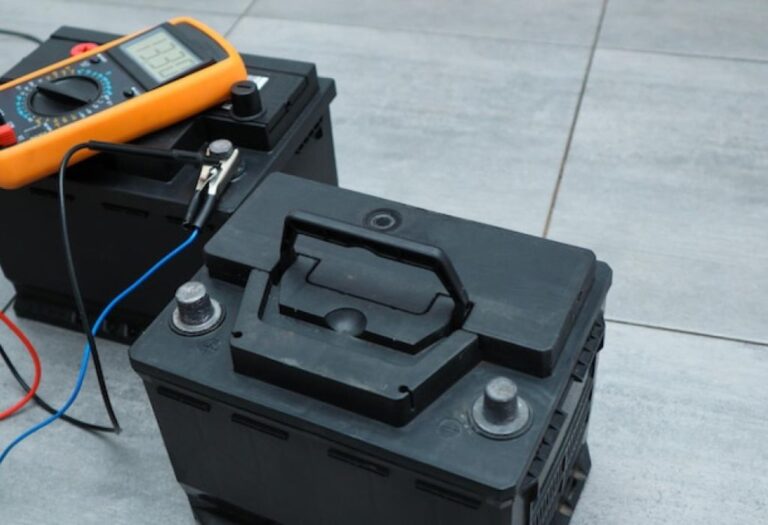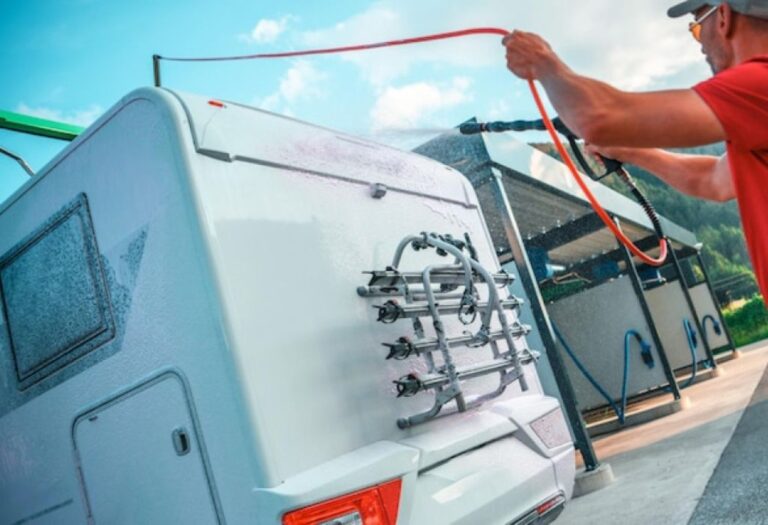Can You Put RV Antifreeze in Hot Water Heater?
Every RV owner dreads the first frost that signals winter’s arrival. One small mistake in winterizing your plumbing can lead to frozen pipes, cracked fittings, or costly water-heater repairs that ruin the start of next year’s adventures.
The question often arises during this process: Can you put RV antifreeze in your hot water heater? It sounds like a logical step, but doing it wrong can waste gallons of antifreeze, leave behind foul odors, and even shorten the life of your heating system.
RV antifreeze is a non-toxic, glycol-based liquid designed to protect your water lines from freezing temperatures. According to a report from the Family Motor Coach Association, winter freeze damage accounts for nearly 20% of all RV insurance claims (source). This makes proper use of antifreeze an essential part of your winter prep routine.
However, not every part of your RV’s water system should be filled with antifreeze. The hot water heater plays a unique role in your setup, and how you handle it determines whether your system stays protected or suffers hidden damage.
This guide breaks down exactly what happens when antifreeze enters your water heater, why most experts recommend using a bypass valve, and how to properly winterize without wasting product.
By the end, you’ll know the right balance between protecting your plumbing and keeping your hot water system in perfect condition for next season’s trips.
What Is RV Antifreeze and Why Winterize Your RV Plumbing?

When temperatures drop below freezing, water inside your RV’s plumbing can expand and crack pipes or fittings. RV antifreeze exists to stop that from happening by lowering the freezing point of water inside your lines.
RV antifreeze is non-toxic and safe for potable-water systems, unlike automotive antifreeze made with ethylene glycol. It flows through the plumbing, coating the inside of pipes and preventing water from solidifying in winter storage.
Proper winterization means more than simply draining your tanks. Even a small amount of water left behind can freeze, expand, and cause damage worth hundreds of dollars to repair.
According to the National RV Dealers Association, neglecting winterization is one of the top five causes of off-season repair costs (source). For many owners, understanding antifreeze and its purpose is the first step toward avoiding those unnecessary expenses.
Winterizing your RV plumbing isn’t just about convenience — it’s about preserving the integrity of the entire system for years to come.
What is RV antifreeze made of?
Most RV antifreeze contains propylene glycol or ethanol blends that are safe for water systems.
Why is winterization essential for an RV?
It prevents frozen pipes, split hoses, and pump damage when temperatures fall below freezing.
Can you use automotive antifreeze instead?
Never — automotive types are toxic and not suitable for any water system.
Does winterizing protect both hot and cold water lines?
Yes, the antifreeze circulates through all lines if the system is properly prepared and bypassed.
When is the best time to winterize your RV?
As soon as nighttime temperatures start dipping close to 32°F (0°C).
The Role of the Hot Water Heater in an RV System
Your RV hot water heater is a key part of the plumbing system that delivers warm water for showers, sinks, and appliances. It operates by heating and storing several gallons of water or, in tankless models, heating water on demand.
There are two common heater types: tank-style and tankless. The tank version usually holds 6–10 gallons, while tankless systems rely on direct heating without storage. Understanding which one you have is essential for proper winterization.
The hot water heater connects directly to both the cold water inlet and the hot water outlet. When winterizing, this connection makes it easy for antifreeze to enter the heater tank if a bypass valve isn’t used.
Without a bypass, antifreeze can fill the entire heater tank, wasting fluid and leaving behind residue that takes extra time to flush in the spring.
How does an RV hot water heater work?
It uses propane or electricity to heat water stored in the tank or flowing through a tankless unit.
What are the two main types of RV hot water heaters?
Tank-type and tankless systems, both requiring different winterizing procedures.
Why does the heater need special care during winterization?
Because of its large capacity and closed design, trapped water can freeze or cause odor if antifreeze sits inside.
Should you drain the heater before storing the RV?
Yes, always drain or open the pressure relief valve to remove excess water.
Can antifreeze damage heating elements?
Prolonged contact isn’t ideal, so bypassing the tank is the safest option.
Can You Put RV Antifreeze in Hot Water Heater?
This is one of the most misunderstood topics in RV care. Technically, RV antifreeze won’t harm your hot water heater, but it is rarely necessary — and often wasteful — to fill the heater with it.
The main reason experts recommend against it is efficiency. A 6–10-gallon water heater can consume nearly an entire case of antifreeze just to fill, adding unnecessary cost to your winterization routine.
Instead, manufacturers advise using a bypass valve that prevents antifreeze from entering the heater tank while still circulating through the rest of the plumbing system.
Antifreeze inside the heater can also leave behind unwanted taste or odor, requiring extensive flushing before safe use.
Is it safe to fill the hot water heater with RV antifreeze?
It won’t cause permanent damage, but it’s inefficient and unnecessary.
When might you put antifreeze in the heater?
Only if your RV lacks a bypass system or the manufacturer explicitly allows it.
What happens if antifreeze remains in the heater tank?
You’ll notice unpleasant taste, smell, and possible residue buildup.
How much antifreeze would it take to fill the heater tank?
Typically 6–10 gallons depending on tank size.
What is the preferred method?
Use a water heater bypass so antifreeze stays in the lines, not the tank.
How to Properly Winterize Your RV Hot Water Heater (Step-by-Step)

Proper winterization ensures both safety and efficiency. Before adding antifreeze, always turn off the heater’s power and propane supply and allow the system to cool completely.
Drain the tank using the pressure relief valve or drain plug. Once empty, set the bypass valves so the antifreeze skips the heater and flows only through the water lines.
Attach a pump or use your onboard winterizing system to circulate antifreeze through all faucets until pink fluid appears. Don’t forget the outside shower, toilet, and low-point drains.
Check the heater bypass system to confirm antifreeze hasn’t entered the tank. Label or note your settings for easy reversal in spring.
What’s the first step before adding antifreeze?
Turn off all power sources and drain the hot water heater.
How do you bypass the heater?
Use the bypass valves—usually one to three valves behind the heater—to redirect flow.
How much antifreeze do you need for full winterization?
Most RVs require about 2–4 gallons after the heater is bypassed.
How do you handle tankless water heaters?
Follow the manufacturer’s guide; some allow antifreeze flow, but flushing afterward is critical.
How do you confirm the plumbing lines are protected?
Run taps until pink fluid appears, then close valves and secure drains.
Risks, Mistakes, and Troubleshooting When Using Antifreeze in the Hot Water Heater
Mistakes during winterization can lead to wasted fluid, damage, or lingering smells next season. The most common issue is forgetting to bypass the water heater, which fills it with gallons of antifreeze unnecessarily.
Residual antifreeze can create a sweet odor or taste that’s difficult to remove. Always flush your system thoroughly before reconnecting to city water or filling fresh tanks in spring.
Another risk is partial drainage, where leftover water mixes with antifreeze, reducing its effectiveness. This can lead to frozen spots in lines or valves.
Finally, never use compressed air alone on the water heater without confirming it’s fully drained, as pressure can damage seals or fittings.
What happens if the heater wasn’t bypassed?
It wastes antifreeze and may leave odor or residue.
Why might the hot water smell strange after winterizing?
Residual antifreeze or microbial buildup in the tank.
Can antifreeze cause corrosion or damage?
RV-safe antifreeze won’t corrode, but improper storage may cause leaks or scale buildup.
How do you flush the heater after winterization?
Reconnect fresh water, open the drain plug, and run hot taps until clear.
When should you contact a professional?
If leaks, odor, or unusual heater performance persist after flushing.
Best Practices and Future Trends for RV Water Heater Winterization
The best long-term approach to winterizing is consistency. Inspect seals, valves, and bypass kits annually to ensure they’re functioning correctly.
For tankless systems, consider manufacturer-approved maintenance kits that simplify flushing and protect internal components.
Newer antifreeze formulas now use eco-friendly and biodegradable glycol blends, offering protection with less odor and lower toxicity. These advancements reduce waste and make flushing easier.
As smart technology evolves, automatic bypass valves and monitoring systems are becoming more common, simplifying winterization for modern RV owners.
What annual maintenance should be done on an RV water heater?
Inspect the anode rod, flush sediment, and check the pressure relief valve.
Are tankless heaters changing winterization habits?
Yes, they often need specialized flushing instead of full antifreeze circulation.
What are the latest antifreeze innovations?
Eco-safe, odorless blends that protect longer and rinse cleanly.
How can owners reduce antifreeze waste?
By using bypass kits and collecting excess fluid for reuse if still clean.
How does structured Q&A improve SEO and visibility?
Clear, concise answers increase your chances of appearing in Google’s featured snippets and Bing’s AI answer boxes.
Summary and Final Advice on Can You Put RV Antifreeze in Hot Water Heater
While you technically can pour RV antifreeze into the hot water heater, it’s rarely necessary and often wasteful. The better option is to drain the tank and use a bypass system to protect your plumbing without filling the heater itself.
Doing so saves time, antifreeze, and effort when it’s time to de-winterize in spring. Proper winterization also ensures safe, clean water when you’re ready to hit the road again.
What’s the final answer?
Yes, you can, but you shouldn’t — always bypass your hot water heater when winterizing.
What’s the most important maintenance tip?
Drain completely, bypass properly, and flush before reusing.
What’s the benefit of doing it right?
You’ll prevent costly damage and ensure your water system lasts for years.
When should you start winterization?
Before the first consistent freeze, typically in early autumn.
What’s the call to action?
Check your RV’s bypass valves today and prepare for a safe, damage-free winter season.
Conclusion
RV antifreeze is your best defense against freezing temperatures, but using it correctly is the key. The hot water heater doesn’t need to be filled with antifreeze — it needs to be bypassed and drained properly.
Following expert guidance ensures your system remains safe, efficient, and ready for the road ahead. Take the time to winterize correctly now, and you’ll save money, stress, and maintenance next spring.
I’m David R. Coleman, the founder, lead writer, and lifelong tool enthusiast behind GarageToolPro.com. With years of experience in automotive repair, woodworking, and home DIY projects, I created this platform to share practical tips, detailed tool reviews, and step-by-step guides that help mechanics, hobbyists, and homeowners get the job done right the first time.





